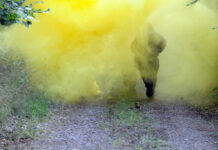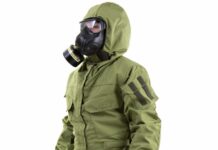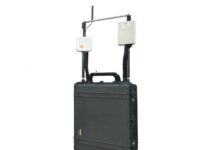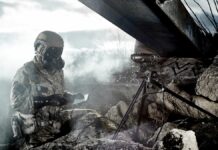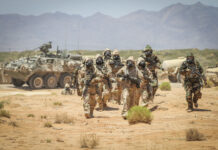Decontamination systems, products, and technologies are an important component of chemical, biological, radiological, and nuclear (CBRN) defence. Yet in a modern military, the threat of contamination threatens warfighting capability more by attacking equipment and systems than by directly causing death or injury to military personnel. The challenge of returning equipment and infrastructure back to duty can be daunting.
CBRN warfare is most often framed as a threat to life and health. This aspect of CBRN warfare is mitigated somewhat. Advances in detection, protection, and medical countermeasures are such that chemical and radiological environments are no longer the threats to military personnel that they once were. Suits, masks/respirators, detection equipment, decontamination for skin and personal equipment, contamination avoidance doctrine, and modern medical care, when combined with good procurement and training, alleviate much of the lethality threat of this category of warfare. Most of the lethal casualties and many of the injuries that were sustained in the First World War would not happen in a modern, well-equipped, and well-trained army.
Instead of people being the primary vulnerability to contamination, materiel and equipment might be the most vulnerable. Some types of persistent CBRN materials can remain present on surfaces or lodge themselves in materials long after an attack. For example, chemical agents, which are mostly liquids in field environments, can absorb into paint, textiles, or rubber. These agents can then desorb for hours, days, or even weeks after contamination. Likewise, radioactive particulates can lodge themselves in cracks or gaps in material. Soil, pavement, and building materials can likewise contain hazards. The residual hazards can make it dangerous for people to operate equipment or vehicles, such as artillery pieces, aircraft, and tanks. It also may make it dangerous to use vital infrastructure like bridges, ports, and runways.

Credit: US Army/Sgt. 1st Class Brent C. Powell
The prospect of injuries and fatalities from contaminated equipment or infrastructure long after an attack means that the true impact of CBRN warfare might be measured in loss of capability rather than numbers of dead or injured. Compared to the World Wars or even the Cold War, militaries have fewer systems and less infrastructure than they once did. The British Army had about 1,200 main battle tanks (MBTs) in service in 1990. Now, the number is only slightly more than 200. Contamination of 25 tanks in 1990 would have been a far smaller fraction of overall combat power temporarily lost to service than 25 tanks today. The same holds true around NATO, and holds true for things like airfields, aircraft carriers, and artillery systems. Contamination can take vital fighting capability offline, even if only temporarily.
The Nature of the Persistent CBRN Contamination Threat
What is it that we are actually talking about when we talk about contamination? First of all, we must consider that not every CBRN threat poses a serious threat of contamination. Contamination is the long-term presence of a threatening material, in some way that could be harmful to health or the environment. Many CBRN materials pose either no contamination threat, or only a very short-lived one. For example, non-persistent agents such as chlorine and phosgene are true gases which do not contaminate materials. Some other chemical warfare agents are relatively volatile liquids and dissipate quickly. For example, the nerve agent Sarin lasts for minutes or hours, perhaps a day in a very cold environment. Most biological threat materials pose no long-term contamination threat, usually through exposure to sunlight. The rare exception is anthrax spores, which could persist for months.
The threats that require deepest consideration are persistent chemical warfare agents, certain radioactive materials with longer half-lives, and those pesky anthrax spores. Many chemical warfare agents are classified as ‘persistent agents’ – a somewhat sliding definition that covers liquids, powders, gels, and such that last for more than a day. For example, Sulphur Mustard and VX are both oily liquids which can contaminate surfaces for a lengthy period of time. Beyond these, ‘Novichok’ agents developed by the Soviet Union, are particularly noted for their persistence in the environment. Samples of these agents have turned up in the UK as part of a plot to murder Sergei Skripal. There is also the theoretical possibility of nano-encapsulated agents, wherein liquids are given a protective coating to increase their persistence. In effect, such agents behave as a dust rather than a liquid and could make contamination worse in some ways.

Credit: US ANG/Sgt. Brittany Johnson
Another issue is the actual surface. Some surfaces absorb materials better than others. Paints, tyres, plastics, some types of armour, and other materials can all be affected by contamination. The rate at which chemical vapours might desorb from such materials depends on a number of factors, including temperature. Higher temperatures aid decontamination by increasing evaporation of chemicals, but have no bearing on radioactive materials. The persistence of radioactive contamination is driven by physics, not chemistry. Short half-lived materials decay quickly, whereas other materials have half-lives denominated in years. For example, Caesium 137, one of the hazards noted in nuclear power plant disasters, has a half-life of 30 years and will stay hazardous until physically removed.
Finally, it is also important to mention contamination in non-CBRN warfare scenarios. Natural disasters can disseminate hazardous materials and could provide contamination of equipment and infrastructure in a similar manner. We are witnessing such a scenario with the flooding in Ukraine following the destruction of the Kakhovka Dam.
How Clean is Clean? How do we Prove it?
The entire issue of decontamination is governed by the question: ‘how clean is clean enough?’ Nobody has a good answer in every instance. For the non-specialist, the answer might be easy: ‘no threat material present.’ There is a certain basic logic to such a standard, but it would be impossible to achieve. Proving the presence of zero molecules of a substance is impossible to prove in a laboratory, let alone in a field environment. The technology simply does not exist to verify the presence of a single molecule or single spore. Philosophically, it is also difficult to prove a negative. There are two issues involved here. One is detection threshold and the other is safety.
‘Detection threshold’ is the minimum amount of material which can be detected by a particular instrument. Every conceivable contaminant has a level below which the available technology simply cannot detect. A nil reading on a detector does not mean there is no threat material. Even laboratory-grade instruments have limitations. With chemical substances, field instruments are usually vapour detectors. Pretty much by definition, persistent chemicals have low vapour pressure and low volatility. In cold weather, some chemicals are difficult or impossible to detect on surfaces given the prevailing military detection methods. Furthermore, chemicals that have absorbed into materials might be impervious to most field detection methods. Detection instruments can still tell us that we have done a bad job decontaminating, but they cannot yet tell us if we have done a good job.

Credit: US ANG/Sgt. Brittany Johnson
The other factor is: ‘what level is safe’? Both science and opinion vary greatly on this subject. No substance is so dangerous that a single spore or single molecule is going to pose any kind of threat. We also have reasonable ideas as to what levels of contamination are so acutely dangerous as to pose immediate threats of death or injury. However, there is a wide grey area in the intervening territory between ‘nothing here’ and ‘this level is dangerous.’ Much of what we know about the toxicology of chemical warfare agents is based on quite old information. We do not know enough about long-term hazards. Some threats, like the ‘Novichok’ agents are poorly understood in terms of their toxicity at lower levels. All of this uncertainty means that decisions about what is ‘safe’ for a few days for a tank crew in full personal protective equipment (PPE) may not be safe for months of peacetime training use or for transport by sea or air. Long-term health threats from low levels of contaminants can be poorly understood, as witnessed by Agent Orange, ‘burn pits’, and Gulf War Illness. The latter has been closely correlated with exposure to organophosphates in recent studies.
It is only fair to point out that the detection and safety issues are relatively clear-cut with radiological contamination. We have a better understanding of the relationship between radiation dose and harmful effects than we do for most of the chemical threats. Polonium aside (it’s an alpha emitter and needs trickier equipment), radioactive contamination is readily detected, and we have a broad understanding of what levels are safe and unsafe. Polonium is a bit trickier, but once you know it’s an issue, you can adapt procedures accordingly.
Another aspect of the safety issue is the actual safety of the decontamination process. Some methods of decontamination merely move the contamination from one place to another. While transferring radiological contamination off a tank into a pond of run-off wastewater may return the tank to use, the wastewater pond is now a problem. Many decontamination techniques use reactive chemicals to attempt to neutralise chemical or biological hazards. Yet some of these chemicals themselves might be contamination hazards if residue is left on decontaminated surfaces.
Addressing the Problem
In an ideal world, we would have a chart with curves on it, showing detection thresholds and safety levels of various substances. We could use such charts to guide our selection of decontamination processes. Right now, there is little point in drawing up such charts as, honestly, the detection thresholds are too high, and our understanding of long-term low-level hazards is too low. Military forces are left with an operating assumption that decontamination needs to be thorough, and we cannot rely on detection to tell us if we did a good enough job.

Credit: USMC/Sgt. Danny Gonzalez
Militaries have understood the decontamination conundrum for some time. For generations, equipment decontamination was driven by an overkill concept. It was basically assumed that heavy-handed caustic chemicals were needed. Hypochlorite bleaches were commonplace and used in quantities and concentrations that would be hazardous in themselves. The US Army’s primary decontamination chemical was called DS-2 and was in of itself a dangerous cocktail of three chemicals. It would peel paint and burn skin. While hypochlorite bleaches are still in use, a number of less hazardous decontamination substances are now in use, made by various companies around the world. The general state of this market has been well covered in this magazine, particularly in issues 02/20 and 10/21 and has changed little from the time of writing.
The market has provided good materials for use in decontamination and even the generic ones, such as soap and warm water, generally do work. The issue of thoroughness derives from other factors than the existing decontamination products. It is not that a particular decontamination chemical is ineffective. They are all broadly good at their job, and this author can only foresee incremental improvements in efficiency and economy in that sector. Rather, the issue is where and when to use it, how much to use it, how many times a wash might be needed to achieve a safe level, and how to know if you have done a good enough job. This leads back to the issues described above.
The Road to Better Decontamination
Two pathways to improvement become obvious. Better detection is needed. Military personnel need better situational awareness to know when and where decontamination is needed. Detection can also provide better awareness of how much of a particular system is decontaminated. For example, if only the exterior of a tank is contaminated, then much less time, labour, and materiel are needed for decontamination. Additionally, if we can detect lower levels of contaminants, then detection becomes more useful in telling us if decontamination efforts were adequate.

Credit: US ANG/Master Sgt. Jonathan Duplain
Some of this improvement amounts to greater sensitivity and better selectivity in existing types of chemical agent detection systems. The US Department of Defense (DoD), the biggest spender in military CBRN procurement, is pushing the NGCD – Next Generation Chemical Detector programme. In reality, this program is pursuing four different instruments. One of them is the PCAD – The Proximate Chemical Agent Detector. Smiths Detection (US-UK) and laser firm Block MEMS (US) are known to be working on this project. The PCAD holds forth the prospect of better detection of contamination on surfaces, as it detects liquids or even solids, rather than just vapours emitting from liquids.
Fumigation techniques show much promise, particularly in the tricky business of decontaminating interior spaces and sensitive items like electronics. Companies like Steris (USA) and Cristanini (IT) provide the ability to use hydrogen peroxide or hydroxyl radicals in mist form to neutralise chemical or biological contamination in enclosed spaces. Fogging the interior with reactive mist is a viable method of dealing with environments such as aircraft cockpits and ambulance compartments. If one put the items to be contaminated inside a sealable environment, the entire item can be decontaminated. Traditionally, this has meant cabinets for surgical instruments and the like. However, in theory the technology is scalable. One can envisage a tent big enough for fumigating a tank, or a hangar for a helicopter.
A new frontier in this area is visible contamination indication. If you could spray a tank or a truck with a chemical substance that visibly changed colour in contact with contaminants, it could substantially improve decontamination efforts. The US military funded development of ‘Chemical Agent Disclosure Spray.’ The product, originally developed by a spinoff from the University of Pittsburgh, uses enzymes to provide a visible colour change when the spray encounters blister and nerve agents. The product, also known as ‘Agentase’, is now manufactured by Teledyne FLIR (USA). This technical approach is actually superior in many ways to trying to use detection instruments and will yield good results in conditions and scenarios where vapour detection is simply inadequate. Improvements in decontamination are rarely exciting, but this development is an exception, and it merits close observation.
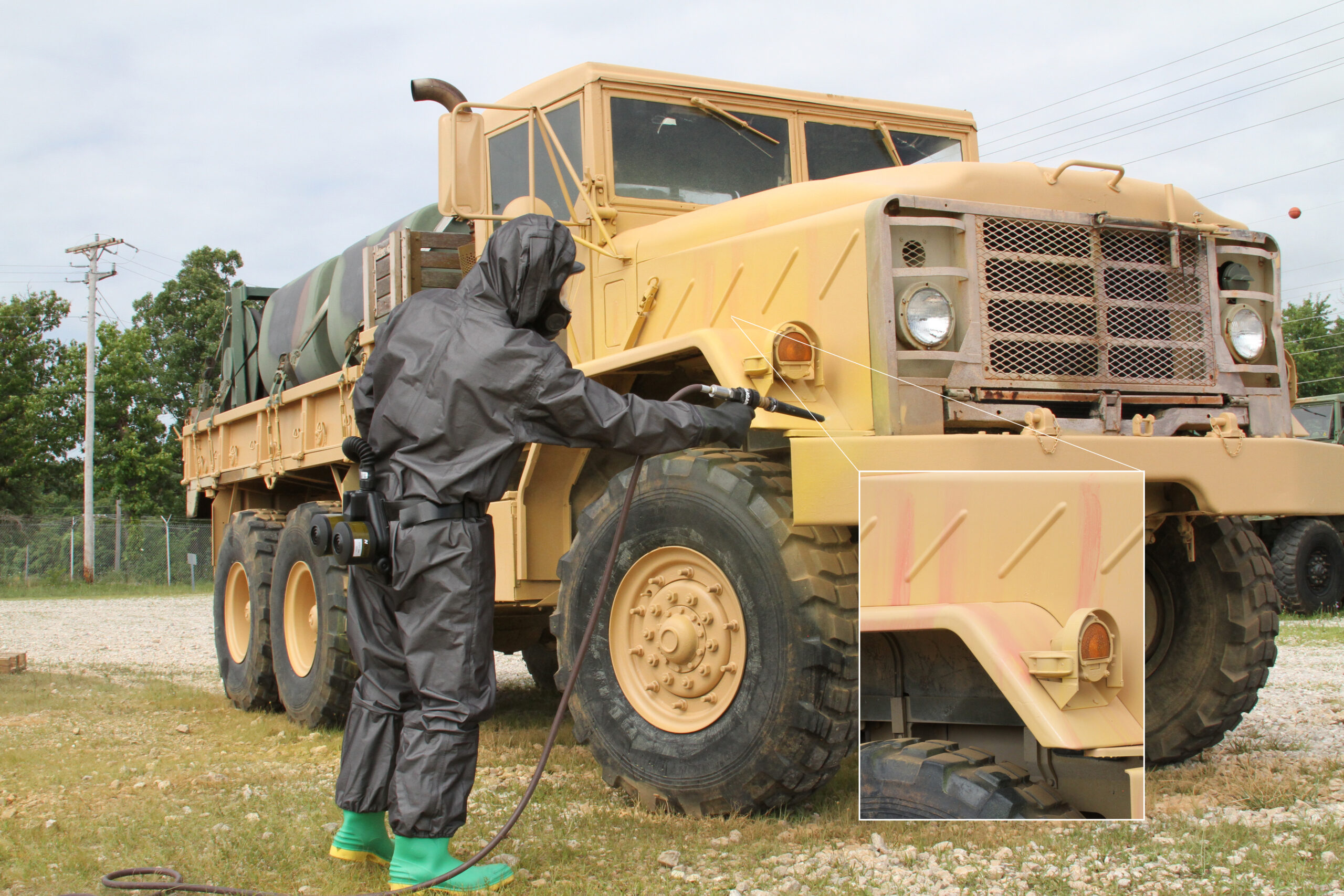
Credit: US Army/Lisa Bistreich-Wolfe
The other pathway is to improvement is capacity. Militaries have, since the cold war, systematically and sometimes even ruinously eroded their force structure in CBRN defence.
Dedicated troops and units for decontamination are far rarer than they were at the height of the Cold War. Decontamination as an actual mission often now resides in reserve units or as an additional duty for other types of units, where it invariably languishes low on the list of priorities. It becomes a serious question in some modern militaries as to exactly which troops are supposed to perform the decontamination task. If the mission itself is not clearly allocated, it is little surprise that training and equipment also get neglected.
All too often, the idea in modern militaries is that, somehow, combat units are going to decontaminate themselves. This is largely an untested hypothesis. Decontamination is not conceptually difficult to grasp. However, it is one of the most physically demanding and annoying missions that you can task soldiers to undertake. If you have soldiers and units whose job it is to do it, then it becomes a priority. If you give the task to soldiers and units that have other important jobs to do, the necessary training and practice for decontamination will lose emphasis. Even if they are reservists, the way forward is for armies to devote at least some force structure to decontamination.
Other Options: Ageing and Abandonment
It is not often discussed, but sometimes there are only bad options. Some operational scenarios have the prospect of widespread contamination of major equipment. Not everything that needs decontamination may get treated in a timely manner. It is possible that resources will be overwhelmed. Some sort of triage is likely to be needed.
One alternative in this scenario is ageing and weathering. If left in open air exposed to the elements, CBRN contamination will degrade on its own due to exposure to the natural environment. Most chemical warfare agents respond, even if gradually, to moisture in the air and from precipitation, and degrade through hydrolysis into compounds that are less hazardous. It should be noted, however, that many chemical agent degradation products are still hazardous to some extent. Biological contamination is susceptible to degradation by sunlight. Radiological contamination will decay according to its half-life. In particular, fallout from actual nuclear weapon explosions has many isotopes with short half-lives. The dose rate (and thus the danger to health) from a vehicle contaminated with nuclear fallout will be far lower after a week of decay time.

Credit: US Army/Sgt. Patrick Eakin
Ageing and weathering may not be the perfect solution. In many instances, it is unlikely to be able to replace thorough decontamination. Generally, though, this approach may reduce hazard levels significantly and thus reduce the resources needed for eventual decontamination. Weather obviously varies and not every climate or season will reduce contamination equally. Warm and rainy weather is the best for gradual neutralisation of chemical hazards, whereas dry and sunny is more ideal for biological threats. Returning equipment to service, though, requires awareness with detection instruments and understanding of the properties of the threat material.
The other approach is abandonment. It may be a better use of resources to replace an item rather than decontaminate it. As a practical matter, many items that were potentially contaminated during the Salisbury Novichok nerve agent incident went to landfill rather than be subjected to decontamination. For example, some emergency services vehicles were deemed, not without controversy at the time, to be cheaper to bury forever than decontaminate. Abandonment has also been the course of action in some radiological contamination scenarios involving items dirty with long-half-life materials such as Caesium-137. Abandonment also carries with it the issues of safety. Burying or isolating a contaminated item does not remove a hazard but merely segregates it.
The truth is that military forces have seldom faced the threat of widespread CBRN contamination of equipment since 1918. Armies and potential CBRN threats have evolved considerably since the dawn of chemical warfare. Countermeasures have evolved significantly as well, but for now the challenge of decontamination, as well as returning infrastructure and equipment back to service in CBRN environments remains a hypothetical challenge.
Dan Kaszeta




